Published by Tomohiro Nakajo on Aug 2, 2016 10:07:19 AM
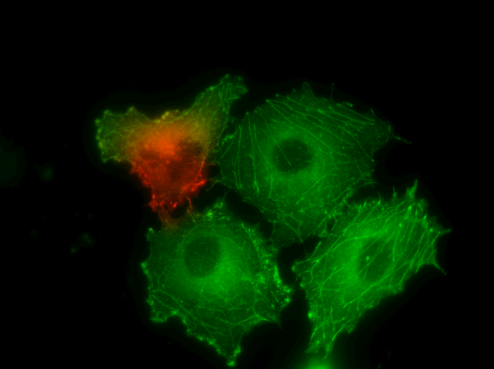
MBL’s CoralHue fluorescent product series is composed of many proteins to make your life "brighter"! We offer expression vectors and cloning vectors. How do you know which vector to use? Learn more about how to choose which vector is right for you.
To begin- what is a cloning vector and what is an expression vector? A cloning vector is exactly what it sounds like- it makes clones! With this plasmid, you won't be able to see localization of fluorescence. However, using an expression vector, you can transfect into mammalian cell lines and visualize where your protein using fluorescence microscopy and get more information on it's function.
MBL's vector series includes both cloning and expression vectors. Cloning vectors have "-S1" in the last of their product name. These Cloning vectors are for researchers using cells other than mammalian, using virus vector, and so on. If you use S1 vectors, you can digest by restriction enzymes or amplify the Fluorescent Protein (FP) fragment by PCR, and then clone into a different expression vector that you like.
These plasmid backbones also have different antibiotic resistance genes. For example, the cloning vector has Ampicillin resistance while the expression vector has Kanamycin reistance gene.
We offer 4 types of expression vectors. All of these expression vectors can be used in mammalian cell lines because the ORF (Open Reading Frame) is driven by CMV (Cytomegalovirus) promoter.
The difference between "-MN1" and "-MC1" is based on the position of MCS (Multiple Cloning Site). MN1 has MCS in the side of N-terminal of the FP. MC1 is the C terminus of the FP. These vectors are for researchers adjusting the distance between Gene Of Interest (GOI) and FP because MCS is located just before/after the FP. An example of when these vectors are recommended would be for researchers who are optimizing peptide linkers by themselves in order to construct FRET biosensors.
"-MNLinker" and "-MCLinker" have flexible peptide linker between MCSs and FPs. "-MNLinker" means that MCS is sited in N-terminal of FP beyond the peptide linker. Flexible linker is constituted of Glycine and Serine, they are most popular constitution in FP society because both amino acids have small side-chain with less steric hindrance.
There is a possibility that FP might inhibit the function of GOI when these genes are too close. If you want to visualize localizations of GOIs, please go straight to choose "-MNLinker" or "-MCLinker". See the images below for with and without linker fluorescence.
Left; KikGR1-linker-beta-actin (MNLinker), Right; KikGR1-beta-actin (MN1)
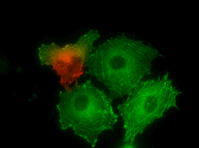
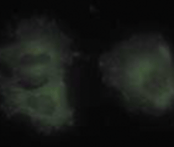
Finally, each vector data sheet lists the amino acids in MCS. Our MCS itself is a flexible linker-like sequence constituted from hydrophilic and flexible amino acids, eliminating bulky and rigid amino acids such as Tyrosine, Phenylalanine and Proline, and so on.
If you need longer linker than "-MNLinker" and "-MCLinker", you can use the MCS as an additional linker!

Our Cloning vector map for AM-V0091M- Keima Red
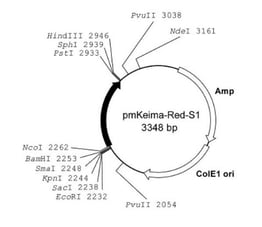
Our Expression vector map for AM-V0093- Keima Red
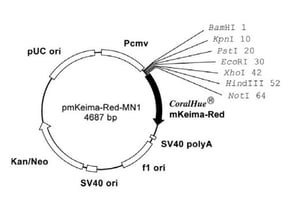
Now you know the difference between a Cloning vector and an Expression vector. Visit this link to see all the vectors we offer and how we can help your needs!